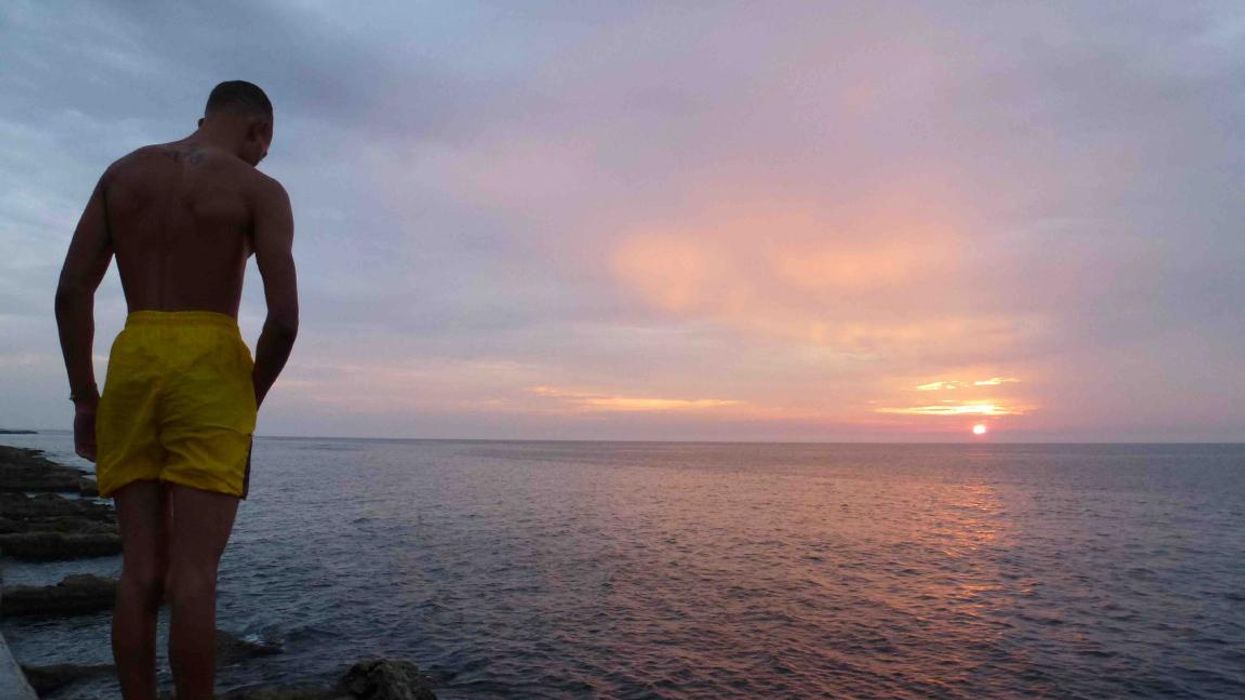Non-topics
Life Among the Ruins
Life Among the Ruins

By continuing to use our site, you agree to our Privacy Policy and Terms of Use.
Life Among the Ruins

I never planned to spend my nights in Havana at a whorehouse. Well, maybe I am being a bit harsh, so let me explain.
The red carpet of my floor is sopping wet: There must be a broken pipe. I assume it had broken years, maybe decades, ago. Moldy stalactites grow out of the stuccoed ceiling. I wonder if maybe the pipe had broken the day the Hotel Habana Rivera opened in 1957. Of course then, the place had been a prominent landmark with its art deco styling, large ocean view rooms, sweeping pool, Modernist sculptures, and mosaic-tiled Copa Room. But, now, it falls apart. Set on the far eastern side of the Malecón, in the culturally rich (yet overlooked) Vedado district, the hotel’s main draw is its weekend disco that attracts local teenagers. And, despite its expensive rates and lack of amenities, foreign guests, like me, are drawn to bask in its history.
I sip a rum and Coke, smoke a cigar, and look out at the waves, all in an effort to experience an "authentic" Cuba. What I wouldn't have anticipated was being surrounded by a lobby full of working girls looking for men to keep company. But here I was in today's Cuba - not the cinematic Hollywood fantasy I, like many Americans, had romanticized about. And, so, I turn my thoughts to a night of dancing, and a way out of the confines of these preconceived notions, and this stifling hotel.
I take one of the many decaying Cadillac taxis lined up outside to the depot where I board a bus bound for Santa Clara. After driving through farmlands and lush vegetation for a little over four hours, the bus approaches tobacco fields. In this jungle lies the college Universidad Central "Marta Abreu" de Las Villas (UCLV), and the nearby city of Santa Clara, which rivals the progressiveness of a 1960s Berkeley.
Upon arrival at the miniscule station, I arrange a horse-drawn carriage to take me to my casa particular. Cuba may not have the world’s finest hotels, but they make up for it with these private homestays. Approved by the government, these entrepreneurs reap the benefits of the tourist currency, the cuc, short for the Cuban Convertible Pesos.
I check in with my host and then set out by bicitaxi (bike-taxi) to the Mausoleo Che Guevara, which is the reason I had come here. In 1997, Bolivia had given the famed freedom fighter’s ashes to Fidel Castro, who then consecrated the monument amidst much fanfare. And, now, here I stand in front of it. I walk over to a sculpted wall, inspect the patriotic bas-relief, then gaze up at the towering statue of Guevara, guarding entrance to his somber grotto. Here, beside an eternal flame, he and his compatriots lay at rest.
Though the monument is impressive, it feels a bit sterile. In fact, I connected most with this political icon by viewing the colorful propagandist graffiti and worn Che T-shirts on nearby villagers.
I venture off by bicitaxi to the nearby Tren Blindado, the "Armored Train Memorial". It was here, on this spot, that Guevara bulldozed the local railway, leading to the derailment and victorious overtaking of General Baptiste’s train and 350 soldiers. The strength of the site poetically captures the Freedom Fighter's strength, and the historic battle of Santa Clara, which solidified the rebel’s hold on Cuba in 1958.
My day of sightseeing draws to a close, leaving me to wonder what a weekend night looks like in this town, a rather quiet place despite having a quarter million people. As if on cue, the university students fill in the city’s quaint squares and cobblestone streets. I decide to join the merriment and soon come across what appears to be a colonial building with a bombed out façade. Inside, however, the place teems with sweaty bodies.
Housed in the courtyard, the riotous El Mejunje ("The Mixture"), Cuba’s only drag show, takes the stage every Saturday night. I pay my entrance fee and push through the hot crowd. Here, beyond the crumbling façade, I had found a refuge, a queer, disco paradise. I survey the scene, I relish every note of salsa music, every dance step, the camp and the humor.
I had come to Cuba wanting to experience its past, only to realize its greatness resided not in colonial mansions or nationalist monuments, but the faces of its vibrant and welcoming people, my kin, the Cuban LGBT community.
PLAY: El Mejunje, Marta Abreu No 107, Santa Clara, Cuba Tuesday-Sunday 4pm-1 am.
STAY: Experience the brilliance of a homestay at a casa particular. casaparticular.com.